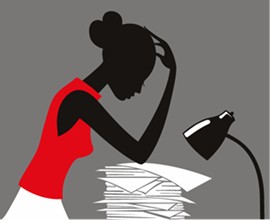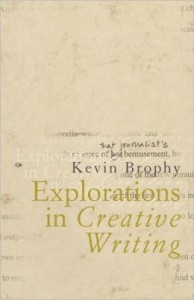To gain work from magazines and newspapers, whether you are looking to write a feature article, profile, essay, review, travel piece, or any piece really, first you need to win the publication over with your idea – you need to pitch your story.
Tag Archives: Narrative techniques and literary devices
Life Writing: Borrowing From Fiction
Life writing is much more than just a listing of facts: dates, figures, events, etc. It is the animating of a life in such a way that others are engaged, interested, inspired even. If life writing is not simply the facts, what is it that people look for in autobiographies, biographies and memoirs?
Pintrest to Develop Characters
Many Social Media platforms can be used to help you develop and track your characters. This week, I’m exploring just one of these: Pintrest, to see how useful it can be in developing a sense of a character and in creating an evocation of that character in order to flesh them out, ready for and beyond words on a page.
Tracking Your Characters
Keeping track of your characters can be a tricky business, especially if your novel has a complex plot with lots of twists and turns, or you have a number of characters who are all pivotal to the success of your storyline. How do you keep tabs on them all to ensure they have depth of character, are well rounded and believable rather than simply one-dimensional fillers who pull your story down around them?
 Firstly you need to simply keep track of who is who and how names are spelt – pretty basic stuff. You also need to keep track of the way your characters look: if you say one character has green eyes in chapter 2, you don’t want to forget this detail and give them blue eyes in chapter 15. Again, it sounds like basic stuff, but it is easy to confuse these small character details when a character from the beginning of the story reappears toward the end, and you’ve dealt with a number of other characters in between. And you need to keep track of your characters actions.
Firstly you need to simply keep track of who is who and how names are spelt – pretty basic stuff. You also need to keep track of the way your characters look: if you say one character has green eyes in chapter 2, you don’t want to forget this detail and give them blue eyes in chapter 15. Again, it sounds like basic stuff, but it is easy to confuse these small character details when a character from the beginning of the story reappears toward the end, and you’ve dealt with a number of other characters in between. And you need to keep track of your characters actions.
Methods for tracking your characters
- Index cards
Use index cards to list your characters. Clearly write the name of your character on the top of the card. Then list the basic details, like date of birth, where they were born, who their family is, who they are in a relationship with, who their friends are, who their enemies are…hey, even where they went to school if this is relevant to your particular story. Write a physical description of your character: what they look like, how they move, etc. You can file these cards alphabetically for ease of access.
- Address book
Buy a cheap address book and add your characters to that, including lists of all the important details as per above.
- Spreadsheets
Another way is by using spreadsheets. Enter the name of every character in your book – it’s much easier to do this as you go! Then add columns for all the important details as per above, eg: a column for family, a column for friends, etc.
- Accordian file
Grab one of those alphabetised accordion files. These are a great supplement to other methods because you can put found things in there. For example, you might trawl through magazines looking for faces or images that remind you of or symbolise your character. You might come across an article about something particular to one of your characters, eg: one might be a beekeeper and you find an article on the declining health of bees; or you might find relevant brochures, eg: a character might be a gardener and you pick up a brochure for your local botanic gardens. Get the idea?
- Timelines
Timelines are great too. These can help you track the individual journey and development of each character and can be created using paper and pens, index cards and spreadsheets with all your characters’ details. There are also a number of timeline programs that can help you with this. Microsoft offer timeline templates in both Word and Excel, Time Glider is one online timeline – great for collaborative writing projects.
Tracking your character resources:
- Tracking Your Characters
- Keeping Track of Your Characters
- Tracking the Inner Life of Your Fictional Characters
- TimeGlider
- TimeLinear
If you found this post useful, you might want to look at my previous blog What Are Plot, Subplot & Backstory?
…And keep an eye out for my blog this coming Friday about using social media for character development and tracking.
Photo credit: Girl with manuscript
What Are Plot, Subplot & Backstory?
It’s time to get clear about plot, subplot and backstory. I’ve just picked up the first draft of the novel I’ve been writing this year with the hope of starting to revise. I’m going to focus on three areas: plot, subplot, backstory. But first I need to work out what these elements are. And tackle the question: What is the difference between plot, subplot and backstory?
Connections
 I have just read ‘Night writing: a reading of Kafka’s ‘Metamorphosis’’ by Kevin Brophy. In many ways I enjoyed Brophy’s discussion of the story more than the story itself: he suggests that writers need to immerse themselves completely in their stories, to explore meaning rather than to impose meaning, he says that stories make themselves known to a writer and demand to be written.
I have just read ‘Night writing: a reading of Kafka’s ‘Metamorphosis’’ by Kevin Brophy. In many ways I enjoyed Brophy’s discussion of the story more than the story itself: he suggests that writers need to immerse themselves completely in their stories, to explore meaning rather than to impose meaning, he says that stories make themselves known to a writer and demand to be written.
Conflict and tension
Introducing conflict and tension into your writing doesn’t have to mean guns and fights or anything that overly dramatic. Tension can seethe just below the surface, brewing but contained. Whatever form your conflict comes in, it is imperative to your plot that there is conflict. Conflict brings change; change brings conflict – both are important to keep your story moving, to trigger the events that form your plot. Louise Doughty says, “A plot is about things happening. It is about change, drama, conflict.”
Narrative Techniques in Travel Writing
Travel writers can effectively borrow from fiction, using narrative techniques and literary devices to improve their non-fiction writing. Creative non-fiction is engaging as well as informative. In my critique of ‘The Year We Seized the Day’ by Elizabeth Best and Colin Bowles, I examine the techniques these authors use to sweep readers up in the story of their journey.
Practice writing dialogue
Continuing with the theme of writing dialogue, today I want to have a go at writing snippets of conversation between two characters, using this to convey how they feel about each other.
10 Aspects of Dialogue
Dialogue creates a sense of immediacy, putting the reader right into the action, connecting the reader directly to the characters. Today I continue from last week, exploring various aspects of dialogue.

